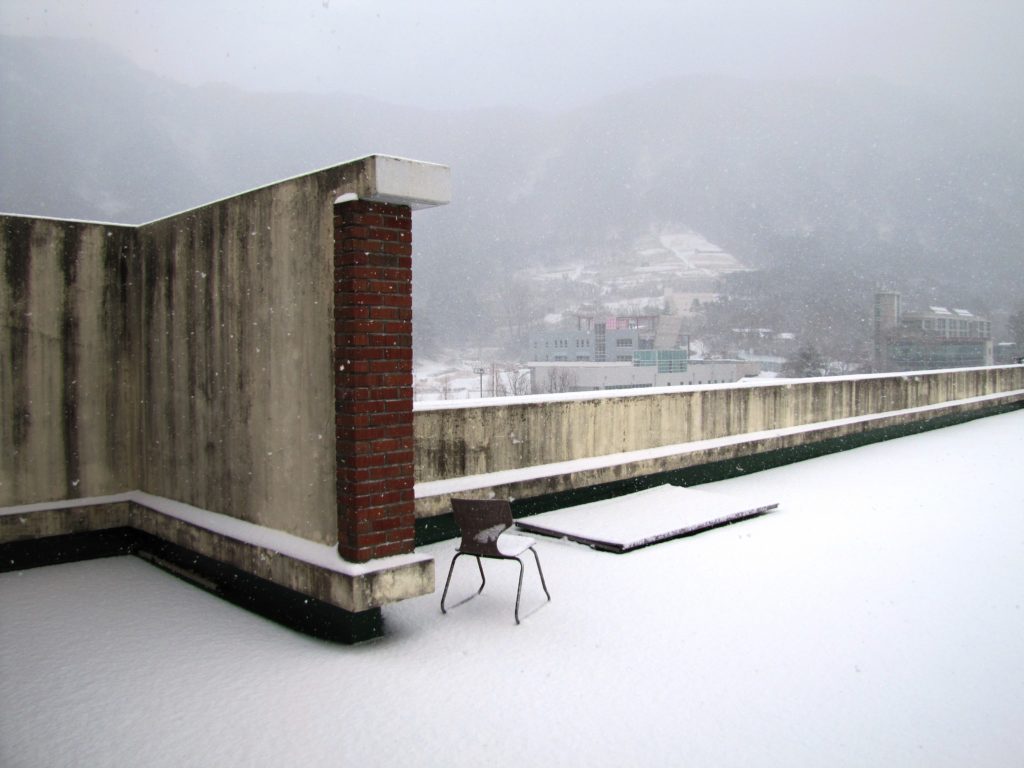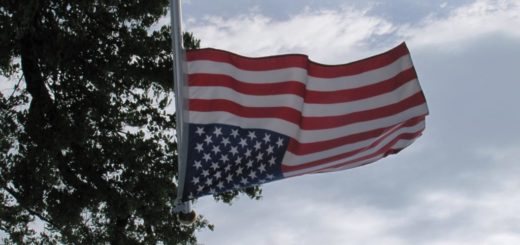The New Moral Math, or A Hundred Thousand Mirrors
One of the most disturbing social symptoms of America’s coronavirus epidemic is a malady we may call mathematical hysteria: the inability, and even unwillingness, of millions of ordinarily rational adults to look at the numbers dancing before their panic-stricken minds with any sort of context-related sobriety. And perhaps the ugliest manifestation of this mathematical hysteria is the moral argument that this outbreak warrants radical politico-economic risks because, as the afflicted are wont to say, “hundreds of thousands of people could die if we don’t act now.”
My standard response to this sentiment, rationalization, virtue-signaling, or whatever you wish to call it, is always the following (to which, thus far, I have not gotten a single direct or reasonable rebuttal, thus proving the severity of the symptom I am identifying):
You imagine, or speculate, that hundreds of thousands of Americans might be “killed by” the coronavirus if state and federal governments do not take radical steps to curtail freedom of movement and association, and to restrict private business decisions in ways that, even apart from their overtly anti-liberty implications, will inevitably cause major job, income, or investment losses throughout the economy. Those steps, with those inevitable results, are being demanded, and right quick, in response, once again, to what at this stage is mostly speculation or hypothesis.
On the other hand, it is a well-known and repeatedly verified fact that every year in the United States of America, tens of thousands of people (from basically the same demographic groups affected by the coronavirus) are “killed by” the common flu. This is not speculation or hypothesis, but a real-world tally of actual dead human beings.
And yet this latter number — tens of thousands of deaths per year — has, I would venture to guess, never caused even a single one of today’s hysterics to propose any similarly radical politico-economic “remedies” to combat the spread of the common flu in any given year, let alone every year.
Why not? Who made the decision, which the hysterics are tacitly assuming as beyond all question or doubt, that a hundred thousand hypothetical coronavirus deaths (this year) are so unacceptable that they justify a politically transformative and economically destructive response, whereas forty thousand tangible and verifiable common flu deaths (every year) are so acceptable that they do not justify the same kind of radical response?
This quantitative moral reasoning, implicit in every demand for “immediate government action on coronavirus,” is as revolting as it is specious.
If I may engage in a little moral speculation of my own — though not of the collectivist-quantitative, but rather the individualist-psychological, sort — I would like to propose a simple interpretation of the hysterics’ shameful moral mathematics. My interpretation cuts through the hypocrisy and speciousness of the quantitative argument for coronavirus deaths being somehow “worse” or “more unacceptable” than common flu deaths, and gets to what I suspect is the real heart of the hysterics’ demands, their calls for “empathy,” their virtue-signaling about “protecting the elderly,” and all the rest of their Moral Masquerade Bawl.
The reason this case is different in their minds is obvious, so obvious (even to them) that they need to mask it with whatever pathetic and offensive logic is nearest to hand. In short, they are not really thinking of those hypothetical hundred thousand deaths at all. Rather, their minds are focused like a laser on just one hypothetical death, the one that typically matters most to a man in a fit of irrational fear — the kind of primal dread, bred of ignorance, that makes pygmies appear as giants, and yipping puppies as slavering hounds of hell.
In a desperate plea to the gods to prevent that death, they would sacrifice their nation’s constitution, cause thousands of fellow citizens to lose their jobs, indefinitely disrupt the studies of millions of children, accept the dumping of trillions of dollars of new, freedom-crushing debt onto their own grandchildren’s heads. Anything to prevent that death.
If you have noticed with some perplexity, as I have, the inherent hypocrisy of the panic-stricken majority’s case for treating coronavirus deaths — or rather the mere prospect of such deaths — as somehow more fundamentally “serious” and worthy of radical preventive action than the tens of thousands of flu deaths America suffers in every normal flu season, just remember that those hundred thousand hypothetical dead people over which they are crying for “compassion” are in all likelihood a hundred thousand mirrors in which they see themselves. For the sake of the potential victim multiplied in those mirrors, everything must stop, everyone must stay home, the government must do something, without deliberation, without restraint, without limits, without a moment’s thought for the consequences.
Further evidence for this interpretation is the ease and speed with which these people leap to accuse you of “lacking empathy” or “not caring about the elderly,” when you dare to suggest that expanded government power is not the best solution for this problem. They simply cannot see anything else but the (delusional) efficiency of brute force, as is often the case with people driven by excessive fear for their own physical safety.
For example, and to demonstrate the panic-induced rational deficiency to which I am referring, I note that when I have pointed out to some of these mathematical hysterics that the senior citizens I know, or have known, would not accept the destruction of the norms of civil society and the deliberate undermining of others’ economic well-being as reasonable terms for protecting themselves from a virus, and then ask — and this question is the real purpose of my example — whether they, the hysterics, would accept those terms themselves if they were in that older, at-risk group, I consistently get this sort of evasive reply: “They might not be comfortable saving themselves on those terms, but that doesn’t mean we should let them die!”
You see? There are only two options: you must either be willing to sacrifice everything for the sake of physical preservation, or else you are choosing to “let old people die.” The possibility of taking private, voluntary steps to protect the elderly in your community is not even on the table. Only tyranny can save them; anything less would be callous and uncaring.
Which leads us back to the question of why those making this argument today have never made it during a normal flu season, when we all know tens of thousands of elderly people will surely die during the annual epidemic. Immediately, the answer becomes clear: During a normal flu season, these people believe that the only threat is to the lives of those abstract thousands of “the elderly,” and hence there is no dire emergency justifying radical social transformation. In other words, those abstract thousands are not, and never were, their primary concern, regardless of what they claim now, by way of rationalizing their demands.
Theirs is not the thinking of “compassionate” people worried about the health of an abstract multitude, “the elderly.” (They aren’t emptying the supermarkets and hoarding toilet paper for grandpa, in case you hadn’t noticed.) Rather, theirs is the anti-thinking of people terrified for their own safety, and therefore demanding without hesitation that everyone and everything be subordinated to their fear.
Don’t get me wrong. I am not suggesting that everyone given to anxiety over this virus falls into the category of tyrannical hysterics to which I am referring. Everything hinges on how willingly the man would trample on the rights of others, and on the institutions and norms of a free society, in response to his anxieties — on how easily he rationalizes the urge to coerce his fellow man into compliance with his preferred course of action. In other words, everything depends on whether a man has preserved enough of his moderation and self-restraint to resist the ugliest temptations of fear.
Allow me to conclude by coming at this issue sideways for a moment. I wish to describe an experience burned into my memory since elementary school, the recollection of which — as with most school experiences I remember well — always evokes distant echoes of childhood anguish, mixed with the spiritual nausea of mature reflection.
One day during perhaps my fourth or fifth grade, a fight broke out in the schoolyard during recess. The combatants were one of my class’s tougher boys — a schoolyard fighter by aptitude if you will — and one of those strange, friendless oddballs who is clearly mentally slow, never fits in with any of the established school cliques, and therefore serves as easy and more or less universal fodder for teasing and taunting. I do not know how the fight started — such scraps rarely have a rationally comprehensible cause — but as usual, half the children in the school seemed to be crowded around instantly, for a closer view of the action.
Fairly quickly, the boys ended up on the ground, tangled up in a sort of wrestling posture. The tough boy from my class was in the dominant position, and biding his time, but the slow kid was hanging in there, refusing to let go — basically holding on for dear life to prevent his eventual conqueror from beginning the inevitable barrage of punches that would bruise his face, or the choke hold that would cut off his breathing until a teacher arrived to save him.
At some point in this doomed stalemate, the slow kid started huffing and grunting audibly, and then sort of growling and frothing, like a terrified animal struggling for survival. Finally, perhaps sensing that his defeat was inevitable, realizing that the crowd of onlookers was cheering for the other boy and therefore eagerly awaiting his humiliating beating, and increasingly lost in a fantasy world of his own fear, isolation, and desperation, he let out a growling shout, “Kill him!”
The twisted psychological release of spitting out those insane words — of bursting through the inherently childish emotional limits of a schoolyard fight, and into the realm of life and death battle — seemed to break all rational restraints, all awareness of his real situation. Repeatedly, incessantly, pointlessly, while barely maintaining his hopeless last-ditch resistance to the tougher boy’s dominant position, he began yelling out the same phrase, again and again: “Kill him! Kill him! Kill him! Kill him!”
I don’t think he was trying to call anyone else into action in his defense. I don’t think he knew what he meant at all. His fear had taken possession of him, and all he could do was shout, at no one in particular, at the universe I suppose, begging life itself to make his terrifying problem disappear somehow. “Kill him!”
That, sadly — but not surprisingly if you stop to think about it — is what blind hysteria, fear untethered from rational restraint, does to people.
I have never forgotten that moment, the sound of that poor, lonely boy’s frightened voice, and the wrathful terror on his face as he shouted and frothed. I know I will never forget it. As awful and indigestible as the experience was for my sensitive elementary school self, and as repulsively indicative of both the ugliness of modern school life and the darkest regions of human nature as it now appears to my adult self, the fact is that I learned a useful lesson that day, though it was many years before I began to understand the lesson.
I recognize resonances of that raw memory in certain events around me today. I am watching that boy again, in the schoolyard of human irrationality, frothing at the mouth, begging the universe to rain down pain, hatred, death, anything — not because he is essentially hateful in nature, but because he is afraid. In other words, he would willingly annihilate the world, his neighbor, a civilization, in a desperate struggle to save himself from his primal and immediate terror.



